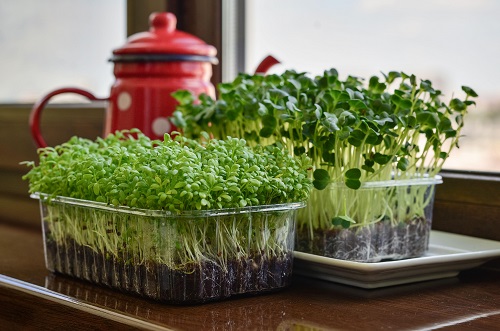Herbs That Start with C can add flair to your garden and dishes. Whether you’re a gardener, chef, or herbalist, this guide has something special for you!
Herbs that start with the letter ‘C’ has numerous medicinal and culinary plants. These herbs are prized for their unique flavors, aromas, and therapeutic properties. Whether you’re a chef looking to spice up your recipes or a gardener wanting to expand your herbal collection, the following Herbs That Start with ‘C’ offer many possibilities.
Herbs That Start With C
1. Chamomile
Botanical Name: Matricaria chamomilla
Herbalists and tea makers widely use chamomile in herbal teas and natural remedies for its soothing effects. Its daisy-like flowers are not only appealing to the eye but also hold anti-inflammatory and anti-anxiety properties.
2. Chives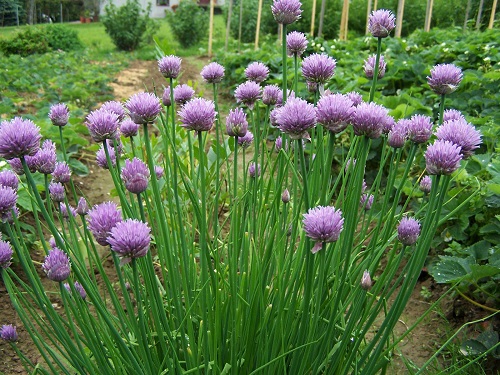
Botanical Name: Allium schoenoprasum
Enhancing dishes with a mild onion-like flavor, chives are a common addition to salads and soups. This slender herb packs vitamins and minerals, and its vibrant green color adds an aesthetic touch to culinary creations.
3. Cilantro
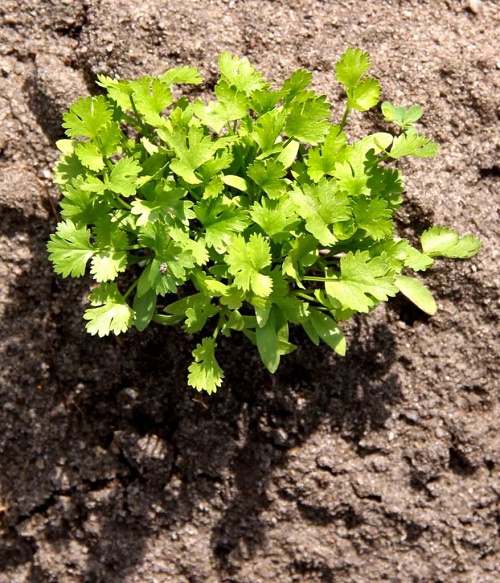
Botanical Name: Coriandrum sativum
Cilantro, a notable member of herbs that start with C, is often used in Mexican and Asian cuisines. This bright green herb has antioxidant properties and is beneficial in detoxifying the body.
4. Celosia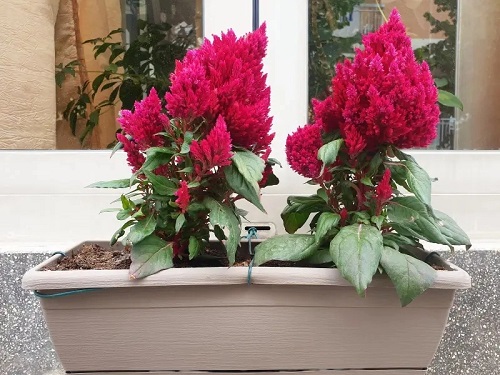
Botanical Name: Celosia argentea
Known for its vibrant and colorful flowers, celosia is a short-lived annual herb with edible leaves. This easy-to-grow plant can reach up to 1 1/2 to 2 feet tall.
5. Calendula
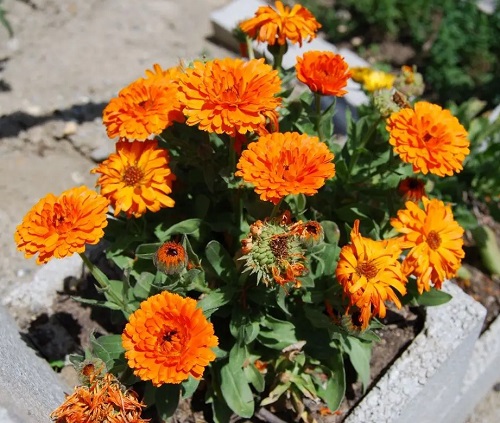
Botanical Name: Calendula officinalis
Calendula is a vibrant flowering herb native to the Mediterranean region. Chefs or cooks add edible bright orange or yellow blooms into various dishes for flavor and color. This herb likes well-draining soil and full sun.
6. Cumin
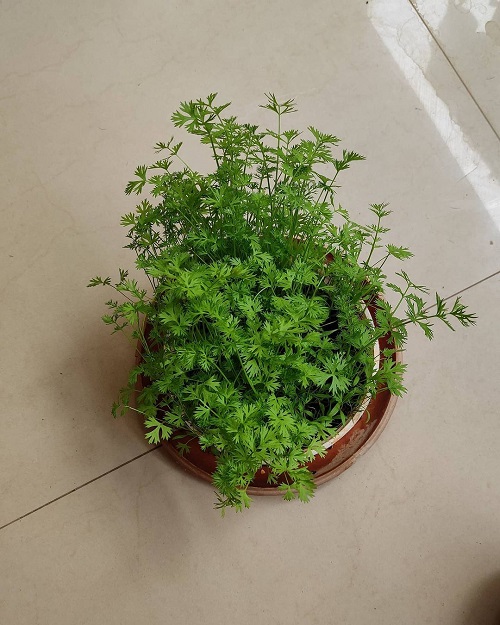
Botanical Name: Cuminum cyminum
Adding a warm and earthy flavor to various dishes, cumin is a staple in Middle Eastern and Indian cuisines. Its seeds have been cherished for their digestive benefits. Grow this herb in a potting mix with good drainage and offer full sun.
7. Chirayita
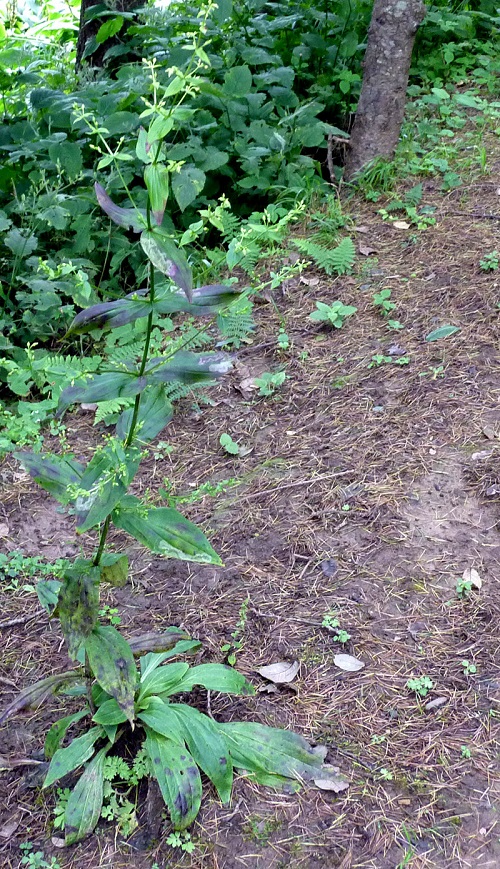
Botanical Name: Swertia chirayita
Chirayita is an important herb in the traditional Indian medicine system. It’s native to the temperate Himalayas. The local people use this herb to manage inflammation, malaria, and digestive diseases.
8. Chervil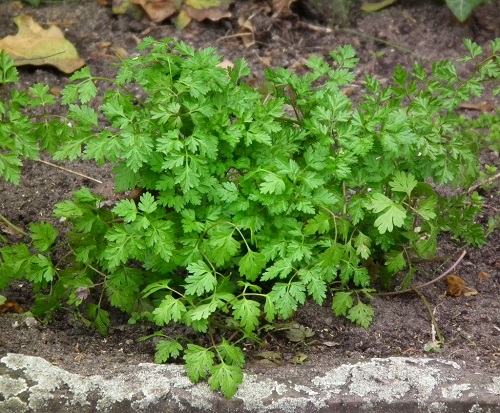
Botanical Name: Anthriscus cerefolium
Another remarkable herb that starts with C, chervil, is native to the Middle East, Russia, and the Caucasus. Its leaves and blooms are a great addition to omelets, salads, seafood, soups, and other dishes.
9. Comfrey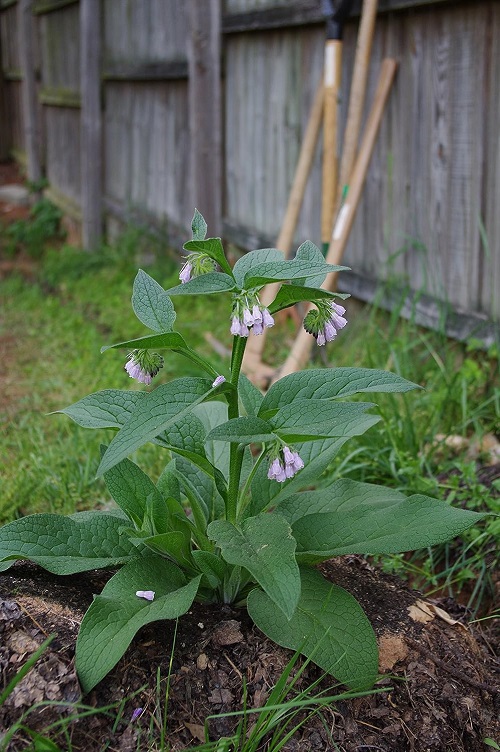
Botanical Name: Symphytum officinale
Comfrey is a perennial herb with hairy leaves and bluebell-like blossoms. It has a long history of use in traditional medicine. However, now experts do not consider it safe for consumption.
10. Chicory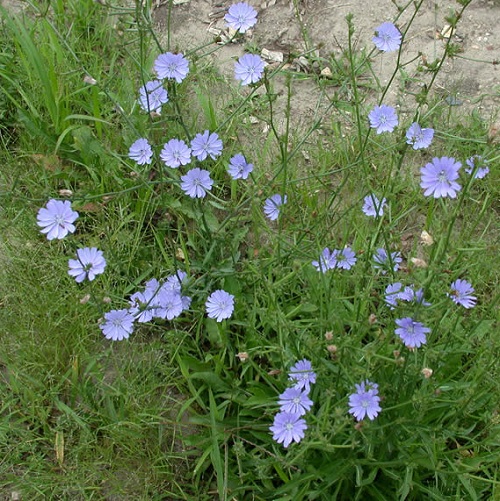
Botanical Name: Cichorium intybus
Chicory is a flowering plant with blue flowers and bitter-tasting leaves. It’s an excellent coffee substitute and a great salad add-on in many parts of the world.
11. Corsican Mint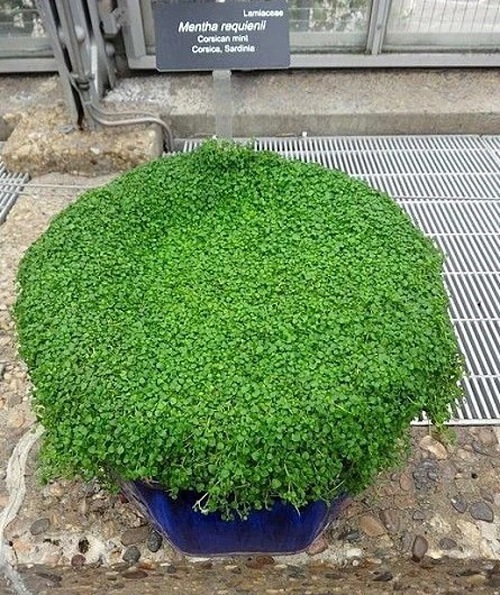
Botanical Name: Mentha requienii
Corsican mint is a strong, peppermint-scented herb popular for culinary and aromatic uses. This herb creates a dense ground cover in gardens with its tiny green foliage. It enjoys full sun or partial shade and moist, well-draining potting mix.
12. Caraway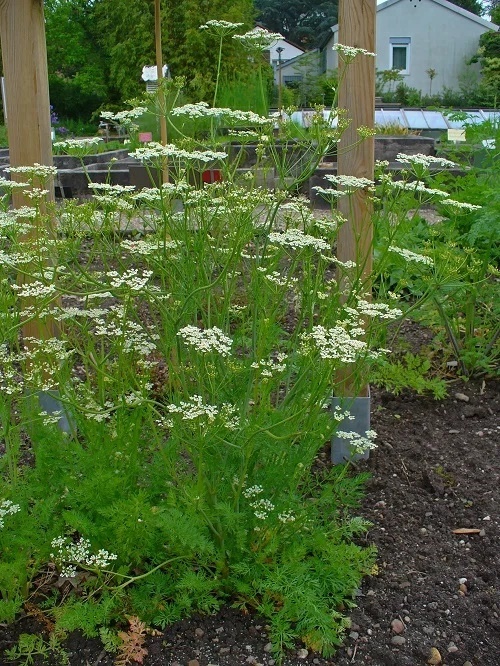
Botanical Name: Carum carvi
Caraway is an edible herbaceous biennial with feathery leaves and small white flowers. Its seeds have a distinct, warm, and slightly sweet flavor reminiscent of anise. Caraway seeds are used in bread, desserts, and various dishes in European cuisines.
13. Collard Greens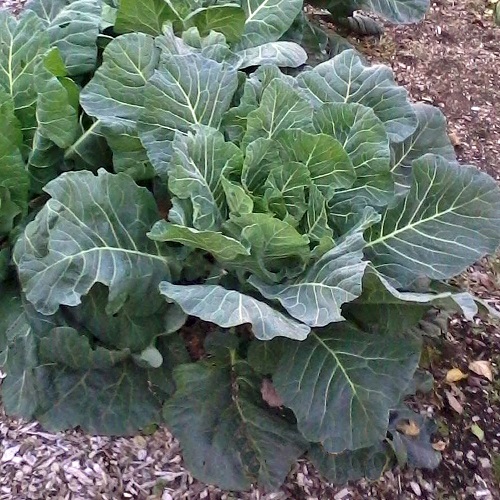
Botanical Name: Brassica oleracea
Collard greens, a crucial herb that starts with C, belong to the Brassicaceae family. Grown for its nutrient-rich edible leaves, it’s classified as a vegetable and herb too.
14. Celandine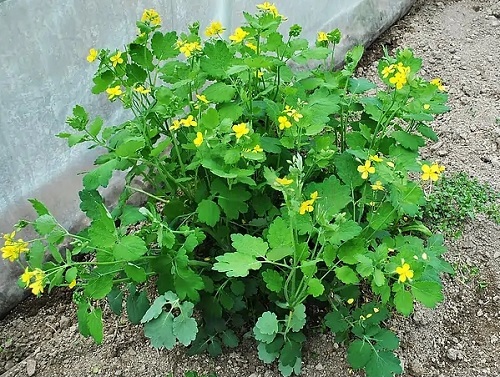
Botanical Name: Chelidonium majus
Popular for its bright yellow blossoms, celandine has been used in herbal medicine to treat liver problems and skin conditions.
15. Cowslip
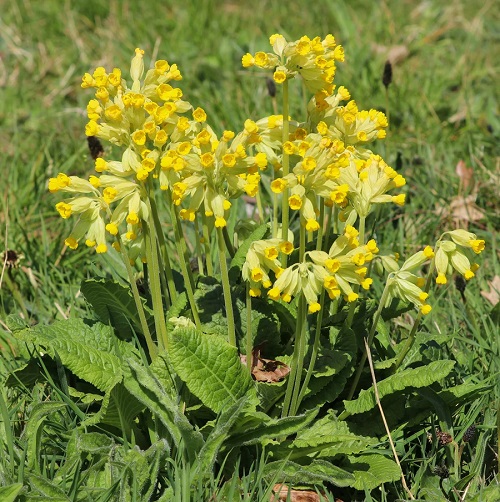
Botanical Name: Primula veris
Cowslip is a perennial herb with yellow flowers and a sweet, floral fragrance. It has been used in traditional medicine to flavor wines and liqueurs.
16. Cudweed
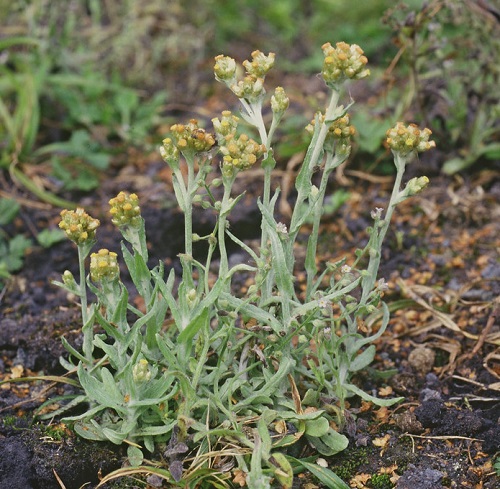
Botanical Name: Gnaphalium spp.
With woolly, gray-green foliage, cudweeds are herbs in the Asteraceae (daisy) family. Traditionally, cudweeds are used to treat parasites and sciatic pain.
17. Culantro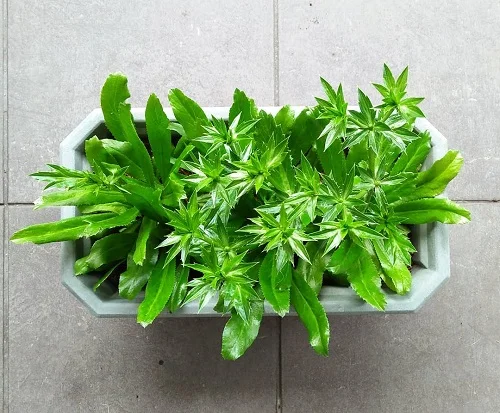
Botanical Name: Eryngium foetidum
Culantro is a leafy herb with a similar flavor to cilantro but more intense. Its leaves are long and serrated, and the herb is known for its potential digestive and anti-inflammatory benefits.
18. Costmary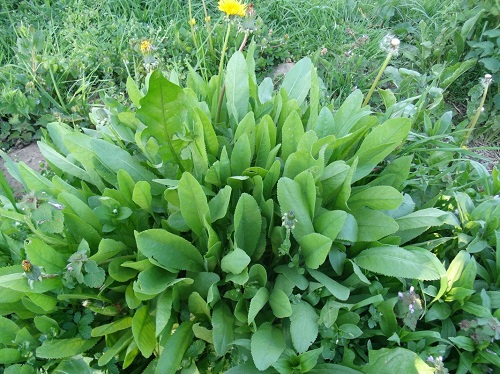
Botanical Name: Tanacetum balsamita
Also known as Bible leaf, costmary is a perennial herb with leaves having a balsamic scent. This fragrant herb can reach up to a height of about 3-6 feet tall. It has been used for culinary and medicinal purposes.
19. Clary Sage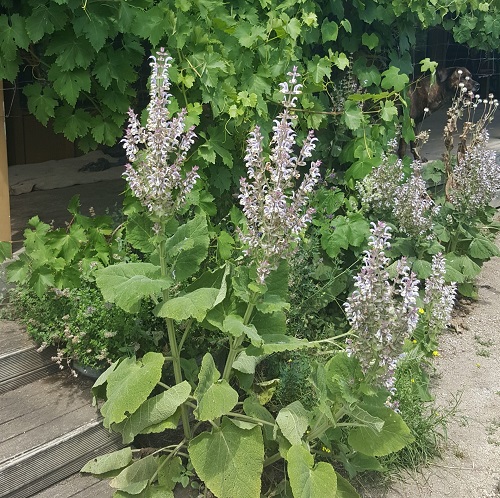
Botanical Name: Salvia sclarea
Clary sage is a herb known for its striking white to lavender flowers and aromatic leaves. This easy-to-grow herb can reach 2 to 5 feet tall and 2 to 3 feet wide. The essential oil derived from clary sage is used in aromatherapy and natural skincare products.
20. Creeping Charlie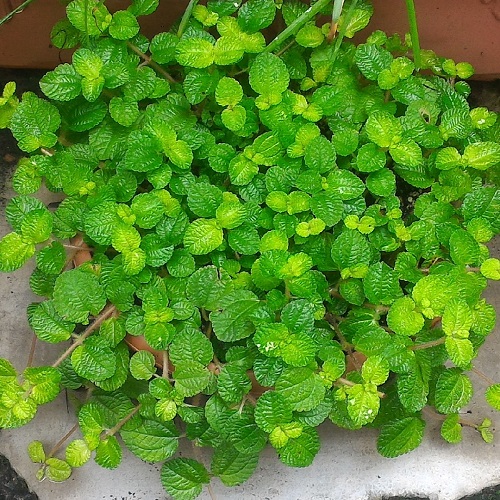
Botanical Name: Glechoma hederacea
Creeping charlie is a popular medicinal herb thanks to its anti-inflammatory, antibacterial, and antiviral properties. Its aerial parts have been popular in traditional medicine for centuries to treat colds, gastric issues, and inflammation.
21. Cardinal Flower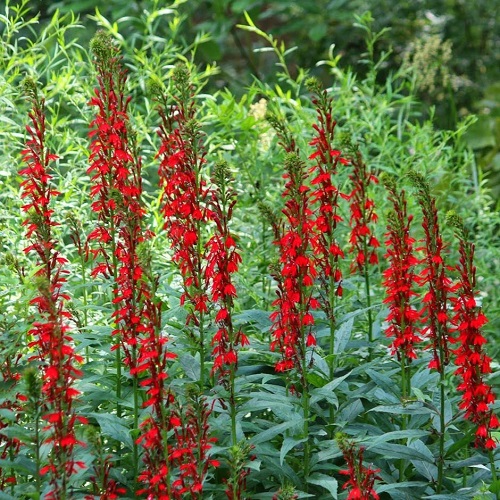
Botanical Name: Lobelia cardinalis
Admired for its striking red flowers, the Cardinal Flower is grown for ornamental purposes, attracting hummingbirds and butterflies. It enjoys medium to wet soil in full sunlight to partial shade.
22. Cardamom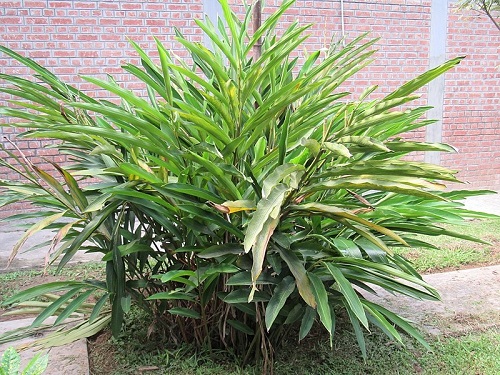
Botanical Name: Elettaria cardamomum
Renowned for its unique sweet and spicy flavor, cardamom is a key spice in many cuisines. It’s added to both sweet and savory dishes, as well as beverages like tea and coffee.
23. Chia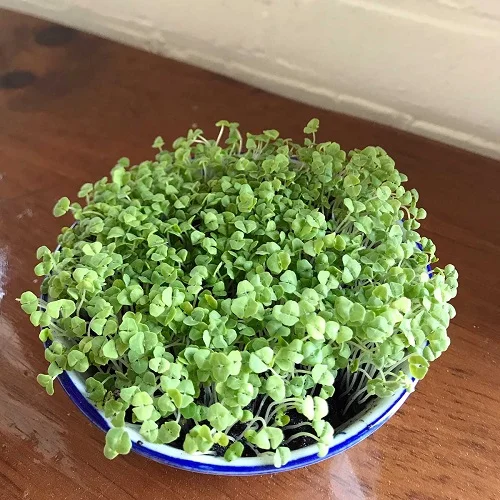
Botanical Name: Salvia hispanica
Chia is an ancient herb native to Mexico and Guatemala. Its seeds are a go-to ingredient in smoothies, puddings, and baked goods. This herb has been historically valued for its potential to provide sustained energy and promote satiety.
24. Cress
Botanical Name: Lepidium sativum
A peppery-tasting herb, cress chervil is one of the delicate herbs that start with C. Belongs to the Cruciferae family, this herb is a popular herbal remedy to treat wounds, coughs, and other ailments.
25. Creeping Thyme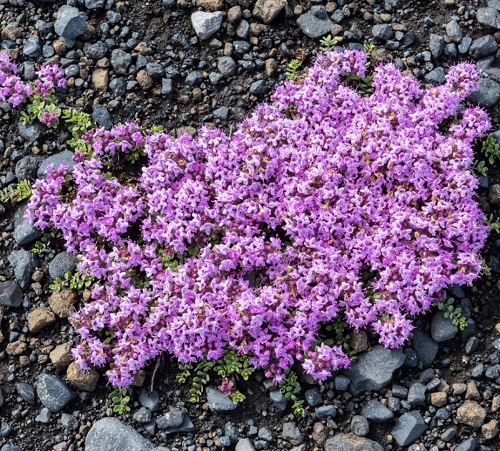
Botanical Name: Thymus serpyllum
Creeping thyme is a low-growing herb with small leaves and pink to purple flowers. It’s a well-known ground cover due to its spreading habit. Creeping thyme has a fragrant aroma and is sometimes used in culinary applications for its mild thyme-like flavor.
26. Chinese Chives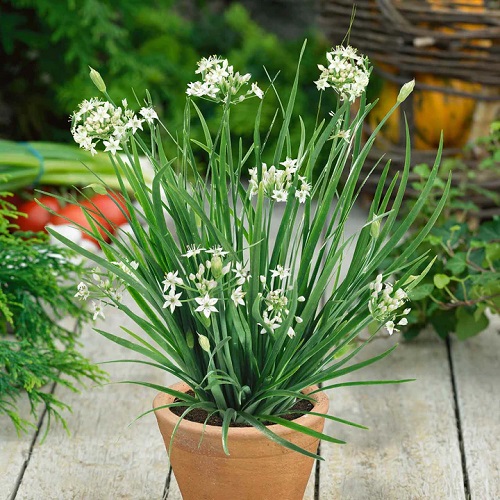
Botanical Name: Allium tuberosum
Chinese chives, or garlic chives, have flat, grass-like leaves with a mild garlic flavor. It boasts tiny star-shaped flowers on the umbels. Chinese chives are commonly used in Asian cuisine as a garnish, flavoring agent, or vegetable.
27. Culinary Sage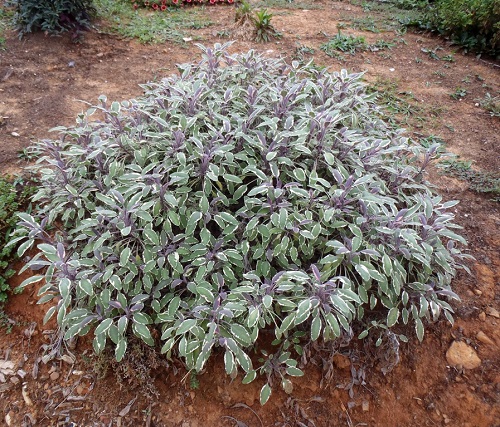
Botanical Name: Salvia officinalis
Culinary sage, a variety of common sage, is often used in cooking for its earthy and slightly peppery flavor. It’s an essential herb in stuffing and savory dishes, particularly in European cuisines.
28. Cutleaf Coneflower
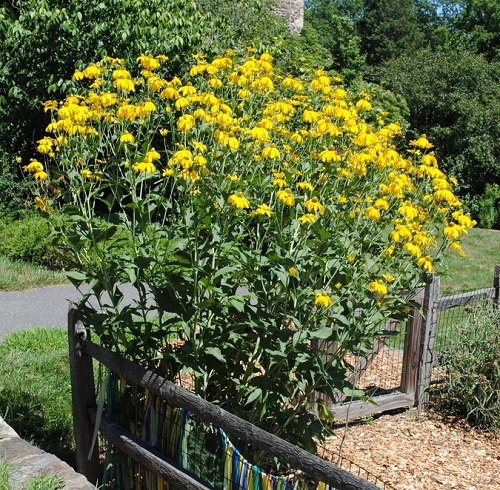
Botanical Name: Rudbeckia laciniata
Cutleaf coneflower produces bright yellow flowers and unique, deeply cut leaves. This herbaceous perennial can reach up to a height of 3 to 10 feet. It admires average, medium, well-drained soil and full sunlight to part shade.
29. Cat’s Whiskers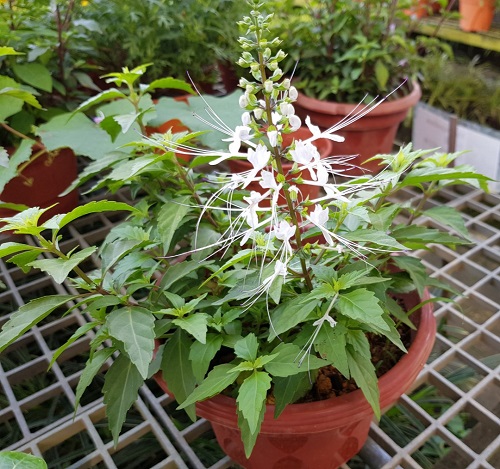
Botanical Name: Orthosiphon aristatus
Cat’s whiskers is a herbaceous perennial that boasts showy white to purplish tubular blossoms resembling feline’s whiskers, hence the name. This flowering herb is a great addition to any garden.
30. Cuban Oregano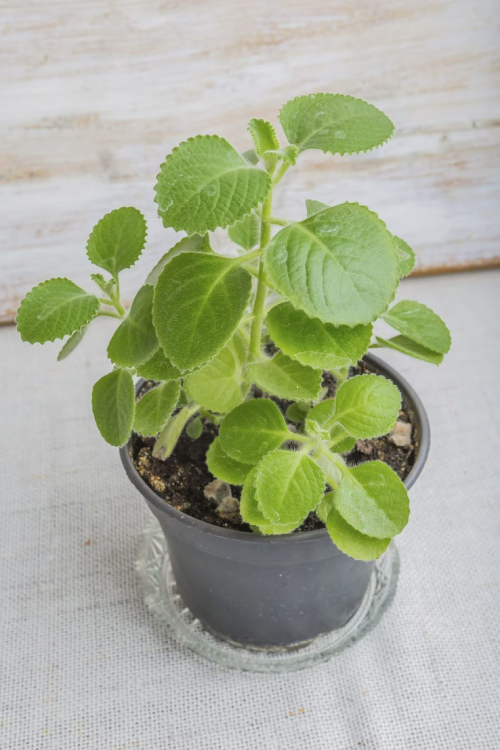
Botanical Name: Plectranthus amboinicus
With a strong and spicy flavor, Cuban oregano is a versatile herb with fuzzy leaves. When crushed, its leaves emit an oregano-like scent, hence the name. Its fresh and dried foliage is often used in cooking.
31. Creeping Jenny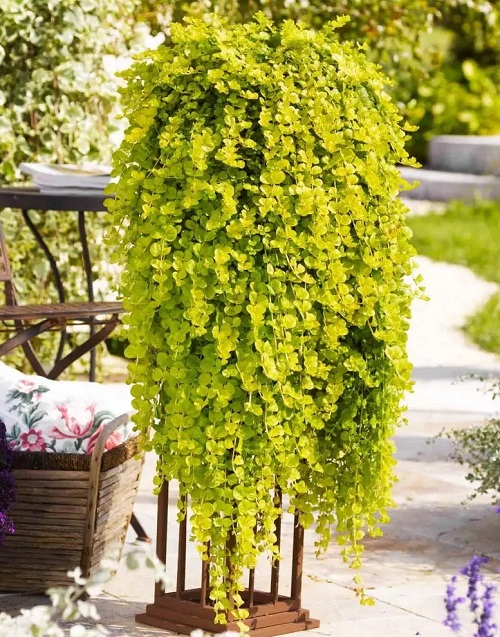
Botanical Name: Lysimachia nummularia
Among the fragrant herbs that start with C, creeping jenny is a popular for ground cover because of its trailing growth. It’s also attracts attention with its showy bright yellow flowers.
32. Chinese Skullcap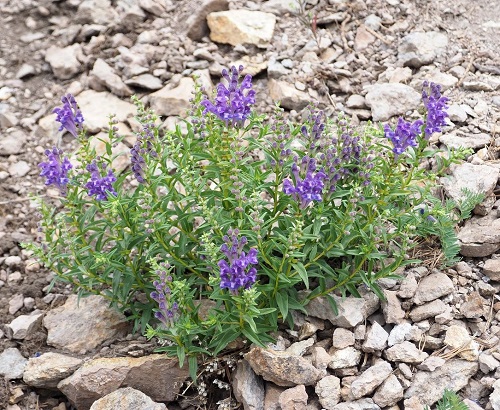
Botanical Name: Scutellaria baicalensis
A staple in Chinese herbal medicine, the Chinese skullcap is known for its anti-inflammatory and anti-viral properties. It’s a perennial herb that offers blue-hued flowers.
33. Chickweed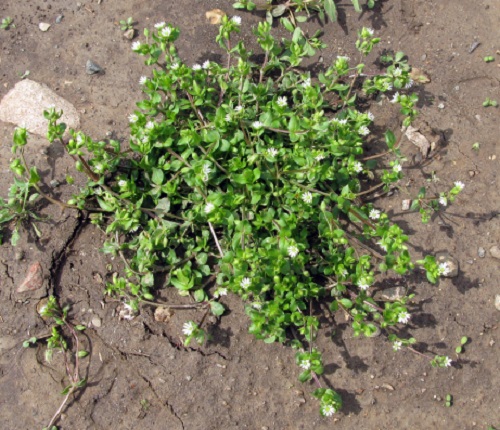
Botanical Name: Stellaria media
Chickweed is a common wild herb with small, oval leaves and delicate white flowers. It has a mild, slightly sweet flavor and is sometimes used in salads, soups, and herbal infusions.
34. Common Clubmoss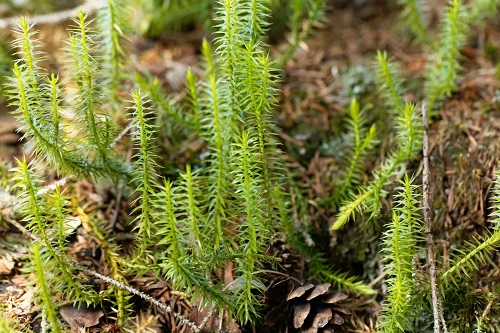
Botanical Name: Lycopodium clavatum
Though not widely used today, clubmoss has a history in traditional medicine. This herb is a well-known ingredient in herbal remedies to treat digestive issues and skin conditions.
35. Carom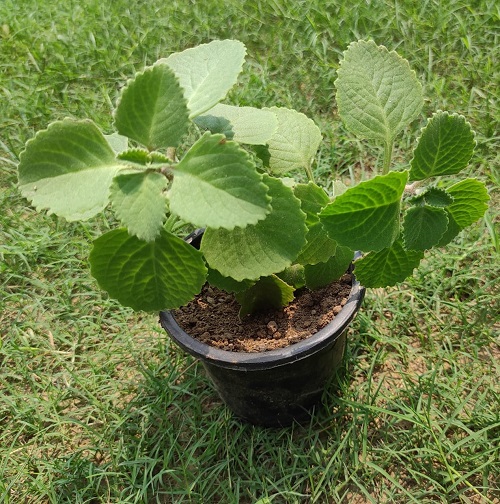
Botanical Name: Trachyspermum ammi
Farmers grow carom for its seeds, which have a strong, thyme-like flavor and a hint of bitterness. Its seeds are popular among herbs and spices that start with C in Indian and Middle Eastern cuisines.
36. Catmint
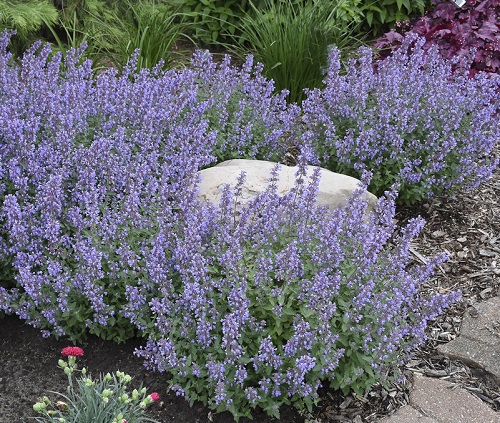
Botanical Name: Nepeta mussinii
Catmint is a perennial herb with gray-green leaves and lavender-blue flowers. It’s closely related to catnip and is used as an ornamental garden plant. Catmint leaves have a minty aroma, thus used in herbal teas and infusions.
37. Cat’s Claw
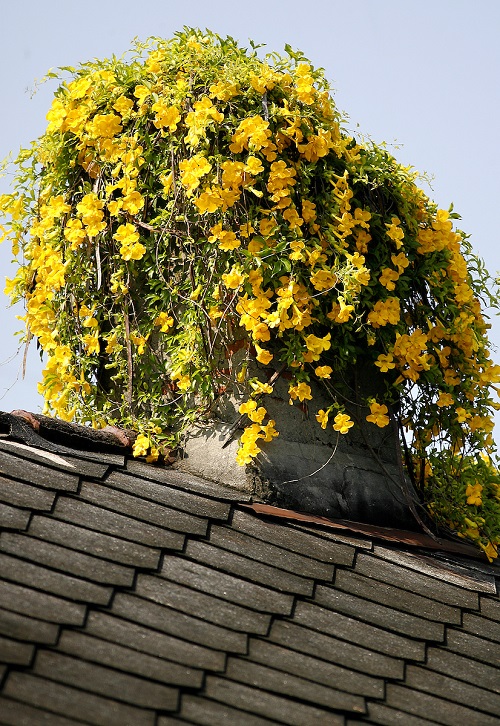
Botanical Name: Uncaria tomentosa
Cat’s claw is a vine with claw-like thorns that resembles a cat’s claw. It’s anti-inflammatory properties make it a valuable addition to the list of herbs that start with C.
38. Coltsfoot
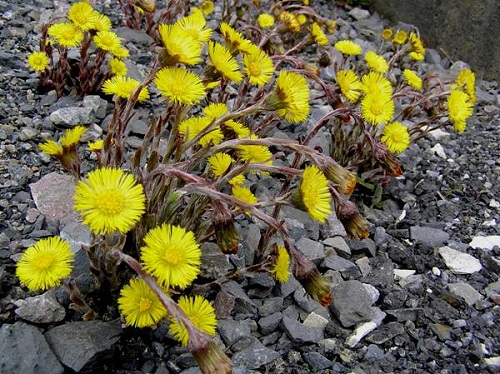
Botanical Name: Tussilago farfara
Coltsfoot is a flowering herb with distinctive, dandelion-like yellow flowers that emerge before the leaves. It has a long history of use in traditional medicine for coughs and bronchial congestion.
39. Clivers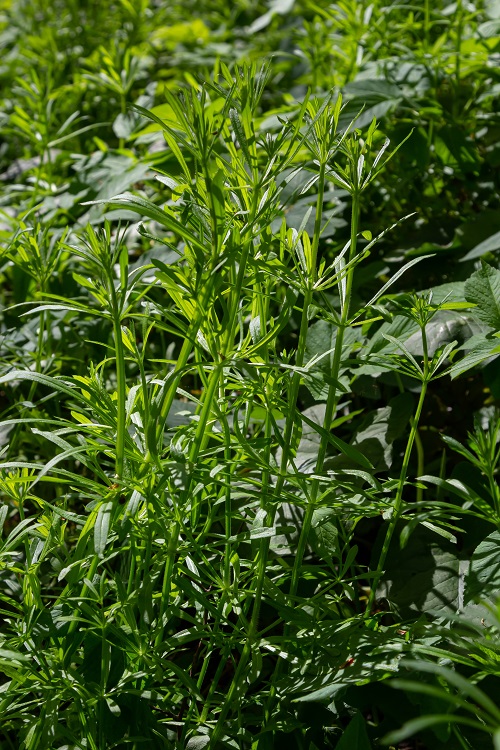
Botanical Name: Galium aparine
Clivers, also known as cleavers, has whorled leaves and small white flowers. It has a sticky texture and tends to cling to clothing and surfaces.
40. Catnip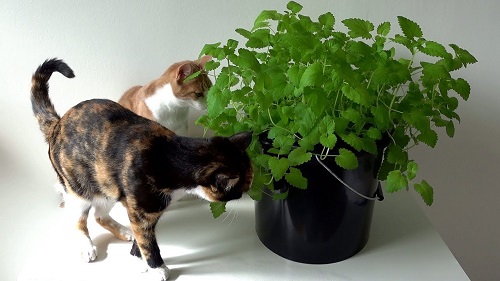
Botanical Name: Nepeta cataria
Catnip, one of the vibrant herbs that start with C, is favored by felines but also used by humans in teas and herbal remedies. Its calming effects make it suitable for aiding sleep and relaxation.
Read the Herbs You Can Grow in Water Indoors here


